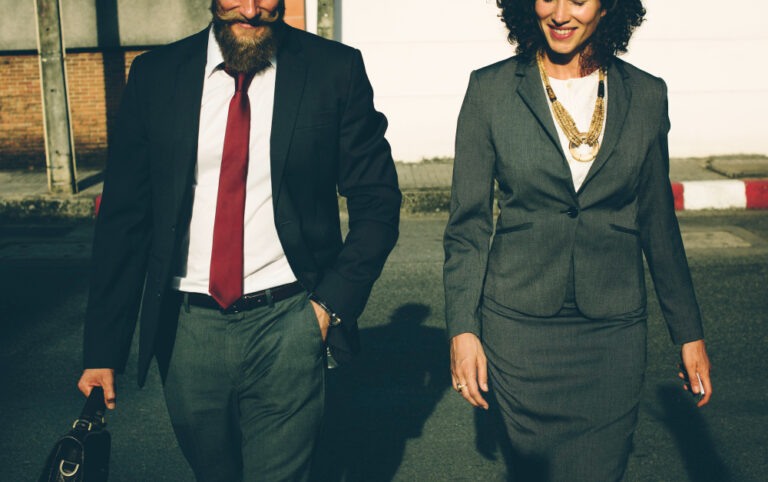Celebrating team achievement on a significant milestone or completing a project successfully, recognizing your team’s effort in Leave Management is crucial in fostering morale and encouraging further excellence. Congratulatory messages not only honor these achievements but also strengthen team spirit and reinforce a culture of collaboration and recognition. Here, we explore more than 20 different ways to congratulations on the achievement, suitable for various contexts from corporate environments to small startups.
Acknowledging Hard Work
- Congratulations to everyone! Your hard work and determination brought this success. Each one of you has played an essential role, and this achievement reflects our collective efforts and talents.
- Your commitment has truly shone through in this project. Every late night and early morning has paid off spectacularly. Well done to everyone involved!
Celebrating a Specific Achievement
- Exceptional work on achieving [specific milestone]! This success is a testament to your focused efforts and strategic thinking. Congratulations to the whole team!
Fantastic job on [specific project or milestone]! This achievement sets a new standard for excellence in our team. Well done, everyone!
Appreciating Team Effort
- Team, your collaborative effort has truly paid off. We achieved something remarkable together, and it’s all thanks to your Determined commitment and teamwork!
Each of you brought something unique to this project, and it’s your combined effort that has led to our success. Congratulations on a fantastic team achievement!
Reflecting on the Journey
- Looking back at where we started and seeing where we are today is inspiring. Congratulations to all for such a tremendous achievement!
Reflecting on our journey from humble beginnings to where we stand now is truly awe-inspiring. Congratulations to each one of you for achieving such outstanding success! Your dedication and teamwork have turned our ambitions into reality. Well done!
Highlighting Individual Contributions
- Every individual effort contributed to this massive success. Congratulations on your dedication and for bringing your best every single day!
I want to acknowledge each of you for your incredible contributions. This team’s strength lies in how you all bring your best to the table. Congratulations!
Encouraging Future Success
- This achievement is a stepping stone to future success. Congratulations on your fantastic performance, and let’s aim for even higher goals!
Congratulations on exceeding every expectation with your stellar performance! Let’s harness this incredible momentum and carry it forward to conquer new and thrilling challenges ahead. Well done, team!
Marking a Milestone
- This milestone marks a significant chapter in our story. Congratulations to everyone for your hard work and persistence!
Attaining this milestone is a significant accomplishment. Congratulations to each member of the team for your hard work and dedication in reaching this exceptional achievement!
Celebrating Creativity and Innovation
- Your creativity has not only solved complex problems but has set us ahead of the competition. Congratulations on a job creatively done!
Your innovative approaches and creative solutions have set us apart. Congratulations on achieving remarkable results through outstanding creativity!
Fostering a Positive Team Environment
- Your positive attitudes and strong work ethic have created a fantastic team environment and led us to success. Congratulations to all!
- Your enthusiasm and support for each other have truly made our workplace a better place. Congratulations to all for this collective achievement!
Recognizing Dedication
- The hours and effort you have put into this project are truly admirable. Congratulations on achieving this well-earned success!
- Your dedication and commitment have not gone unnoticed. This achievement is well-deserved. Congratulations to the entire team!
Emphasizing the Impact of the Achievement
- This project has made a significant impact, and it’s all because of your hard work. Well done and congratulations!
- You’ve not only achieved the goal but also raised the bar for excellence in our industry. Congratulations on a monumental achievement!
Sharing Gratitude
- I am deeply grateful for your tireless efforts and exceptional commitment. Congratulations to everyone for achieving this milestone!
- Thank you, everyone, for your hard work and persistence. Your effort has truly made a difference, and I couldn’t be prouder. Congratulations!
Motivating for Continued Excellence
- Let this success be the beginning of tomorrow’s achievements. Congratulations on a job well done!
Congratulations on achieving such stellar success! Let’s maintain this level of excellence as our ongoing goal and keep pushing the boundaries.
Recognizing Problem-Solving Skills
- Your ability to navigate tough challenges efficiently is a cornerstone of our success. Congratulations on mastering every hurdle!
Congratulations on successfully overcoming every challenge thrown your way. Your problem-solving skills are truly commendable!
Celebrating Team Spirit
This milestone showcases the true essence of our team’s spirit. Congratulations to all for your collaborative efforts and for embodying the power of teamwork!
This success is a testament to the true spirit of our team. Your collaborative energy is our greatest asset. Congratulations to everyone involved!
Acknowledging a Learning Journey
- You’ve grown and excelled through this project, turning challenges into opportunities for learning. Congratulations on achieving these impressive results!
Every step of this project was a learning experience, and you’ve handled it with expertise. Congratulations on this great achievement!
Appreciating Resilience
- Through ups and downs, your resilience has led us to this moment. Congratulations on an outstanding achievement!
Your unwavering determination in the face of challenges has showcased immense resilience. Congratulations on this well-earned success!
Encouraging Company Pride
- Each of you is a key reason why our company stands out as a leader. Congratulations on this proud achievement, and thank you for your hard work!
- You’ve added another chapter of success to our company’s history. Congratulations to the whole team for this proud achievement!
Highlighting Leadership and Guidance
- Special thanks to our team leaders for your guidance and leadership throughout this journey. Congratulations to you and your teams!
- Thank you to our leaders for steering this ship with such skill and wisdom. Your leadership is crucial to our success. Congratulations to you and your teams!
Offering Inspirational Words
- This success is just the beginning. Continue to strive and achieve. Congratulations, and remember, you are capable of even more amazing accomplishments!
May this success lead to greater achievements in the years to come. You are all an inspiration. Congratulations!
Frequently Asked Questions (FAQ) – Congratulating Team Achievements
Why is it important to congratulate a team after a successful project?
Recognizing and celebrating success boosts morale, reinforces positive behavior, and fosters a sense of accomplishment. It encourages continued excellence and strengthens team cohesion.
What’s the best way to congratulate a team?
The best approach is a sincere and specific acknowledgment. Highlight the achievement, individual contributions, and how the team worked together. This can be done through emails, meetings, certificates, team lunches, or public announcements.
Should recognition be public or private?
It depends on the context. Public recognition can boost team pride and motivate others, while private messages can be more personal and meaningful for individuals. A balanced mix of both is often most effective.
How frequently should team achievements be celebrated?
Celebrate whenever a significant milestone or project is completed. Even small wins deserve recognition to keep momentum and motivation high. Frequent, meaningful acknowledgment helps sustain long-term engagement.
Can over congratulating reduce its impact?
Yes, if congratulations are generic or overused, they may feel insincere. Make sure each message is genuine, timely, and relevant to the specific accomplishment.
How do I congratulate remote or hybrid teams?
Use digital tools like video calls, group chats, or emails to celebrate achievements. Personalized e-cards or shout outs during virtual meetings also help create a sense of unity across distances.
What role does leadership play in team recognition?
Leadership plays a crucial role in setting a culture of recognition. When leaders consistently acknowledge achievements, they model behavior that inspires others and reinforces a positive workplace culture.
How can team members congratulate each other?
Encourage peer-to-peer recognition through internal platforms, team meetings, or informal shout-outs. Creating a culture where appreciation flows in all directions boosts morale and engagement.
Should achievements be linked to rewards?
Tangible rewards (like bonuses or gifts) can enhance recognition, but aren’t always necessary. Sometimes, verbal praise or public acknowledgment is just as impactful, especially when done authentically.
What are some creative ways to celebrate team success?
You can organize themed team lunches, give out custom awards, share success stories on company channels, or plan team-building activities. Tailor celebrations to your team’s interests and workplace culture.
Conclusion
Sending a congratulations message for a team achievement is more than a formality; it’s a powerful tool to motivate, inspire, and recognize the hard work and dedication of individuals. These messages not only celebrate successes but also reinforce the values and goals of the organization, building a stronger, more committed team. As you craft your message, remember to personalize it to reflect the unique efforts and qualities of your team.















